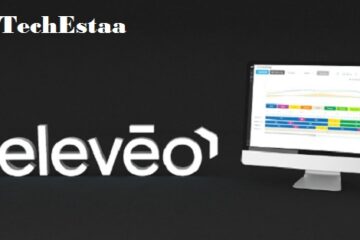In the rapidly evolving world of artificial intelligence (AI) and machine learning (ML), data annotation technology plays a pivotal role. This process involves labeling datasets to make them understandable for AI systems, enabling them to learn, interpret, and make decisions. Without data annotation, the complex algorithms behind AI would lack the foundational training data required for accuracy and efficiency.
In this guide, we’ll explore what data annotation tech is, its importance, types, tools, and future trends.
What is Data Annotation Tech?
Data annotation tech refers to the tools, software, and methodologies used to label datasets for training machine learning models. These annotations provide context, enabling AI systems to identify patterns and make informed predictions.
Key Components of Data Annotation Tech:
- Labeling Interfaces: Tools that allow annotators to tag or label data efficiently.
- Automation Features: AI-assisted annotation to reduce manual workload.
- Quality Control: Ensures data accuracy and consistency for better AI performance.
Why is Data Annotation Important?
AI systems rely on vast amounts of labeled data to function effectively. Without accurate annotations, these systems struggle to interpret raw, unstructured data.
Key Benefits of Data Annotation:
- Improves Model Accuracy: Provides precise data for training, reducing errors.
- Supports Diverse Applications: From autonomous vehicles to medical diagnostics, annotated data is indispensable.
- Enhances Efficiency: Properly annotated data speeds up the training process for AI models.
Types of Data Annotation
Data annotation tech encompasses various methods, each suited to specific use cases.
1. Image Annotation:
Labels images to help AI recognize objects, people, or scenes.
- Applications: Autonomous driving, facial recognition, retail inventory management.
- Techniques: Bounding boxes, semantic segmentation, polygonal annotations.
2. Text Annotation:
Involves tagging textual data for sentiment analysis, natural language processing (NLP), and chatbot development.
- Applications: Virtual assistants, sentiment analysis, language translation.
- Techniques: Entity recognition, part-of-speech tagging, intent annotation.
3. Audio Annotation:
Focuses on labeling audio clips for voice recognition and transcription purposes.
- Applications: Speech-to-text systems, virtual assistants, and voice-activated devices.
- Techniques: Speaker diarization, phonetic transcription, and sentiment tagging.
4. Video Annotation:
Tags elements within video frames to track motion or identify objects in a sequence.
- Applications: Autonomous vehicles, surveillance, sports analytics.
- Techniques: Object tracking, frame-by-frame annotation, and keypoint labeling.
5. Sensor Data Annotation:
Used for IoT devices and wearable tech to process data from sensors.
- Applications: Fitness trackers, environmental monitoring, and robotics.
- Techniques: Time-series labeling and event detection.
Top Tools for Data Annotation
Numerous tools in the market cater to diverse annotation needs. Here are some popular options:
1. Labelbox
- Cloud-based annotation tool with collaborative features.
- Supports image, text, and video annotation.
2. Amazon SageMaker Ground Truth
- Offers automated labeling features to reduce manual effort.
- Ideal for large-scale projects with diverse data types.
3. SuperAnnotate
- Combines AI-assisted annotation with robust project management tools.
- Specializes in image and video labeling.
4. Scale AI
- Provides high-quality annotations with a focus on enterprise-level solutions.
- Includes quality assurance workflows for consistent results.
5. Dataturks
- A user-friendly platform for annotating text, images, and videos.
- Cost-effective for small to medium-sized projects.
Applications of Data Annotation Tech
1. Autonomous Vehicles:
Data annotation helps train AI to identify pedestrians, vehicles, road signs, and obstacles for safer navigation.
2. Healthcare and Medical Imaging:
Annotated medical images are crucial for diagnosing diseases and training AI to detect abnormalities.
3. E-commerce and Retail:
AI-powered systems use annotated data for visual search, personalized recommendations, and inventory management.
4. Natural Language Processing (NLP):
Applications like chatbots, sentiment analysis, and language translation rely on annotated text data for accuracy.
5. Robotics:
Sensor data annotation enables robots to interact with their environment more effectively.
Challenges in Data Annotation
Despite its importance, data annotation tech comes with its own set of challenges:
- Time-Consuming Process: Manual annotation can be labor-intensive and slow.
- High Costs: Quality annotations require skilled labor and advanced tools.
- Data Privacy Concerns: Handling sensitive data, especially in healthcare and finance, poses risks.
- Consistency Issues: Ensuring uniform annotations across large datasets is challenging.
The Role of AI in Data Annotation
To overcome challenges, AI is increasingly being used in the annotation process. AI-assisted tools can pre-label data, leaving humans to refine and validate annotations. This hybrid approach significantly reduces time and costs while improving accuracy.
Benefits of AI-Assisted Annotation:
- Scalability: Handles large datasets with ease.
- Cost-Effectiveness: Reduces reliance on manual labor.
- Improved Accuracy: AI algorithms learn from human feedback to refine annotations.
Future Trends in Data Annotation Tech
As AI and ML continue to evolve, so does the need for data annotation. Here’s what the future holds:
- Automation and AI Integration:
Expect a rise in fully automated annotation systems capable of handling complex datasets. - Crowdsourced Annotations:
Leveraging global talent pools for quicker and cost-effective annotations. - Enhanced Data Security:
Stronger measures to protect sensitive data during the annotation process. - Specialized Annotations:
Growth in niche annotation needs, such as 3D data for AR/VR applications. - Focus on Ethics:
Ensuring unbiased and ethical annotations to prevent algorithmic discrimination.
Why Invest in Data Annotation Tech?
Organizations investing in data annotation tech gain a competitive edge by improving their AI models’ performance and reliability. With applications spanning diverse industries, it’s a foundational technology for the future of AI and ML.
Key Takeaways:
- Drives innovation in AI across sectors.
- Enhances efficiency and accuracy of machine learning models.
- Provides scalable solutions for data-intensive projects.
Conclusion
Data annotation tech is an indispensable component of the AI and ML ecosystem. From labeling images to annotating complex sensor data, this technology ensures that AI systems function efficiently and accurately. With ongoing advancements and the integration of AI-assisted tools, the future of data annotation promises to be more efficient, scalable, and impactful.
Investing in the right tools and strategies for data annotation today ensures that businesses are well-positioned to harness the full potential of AI and ML in the years to come.



